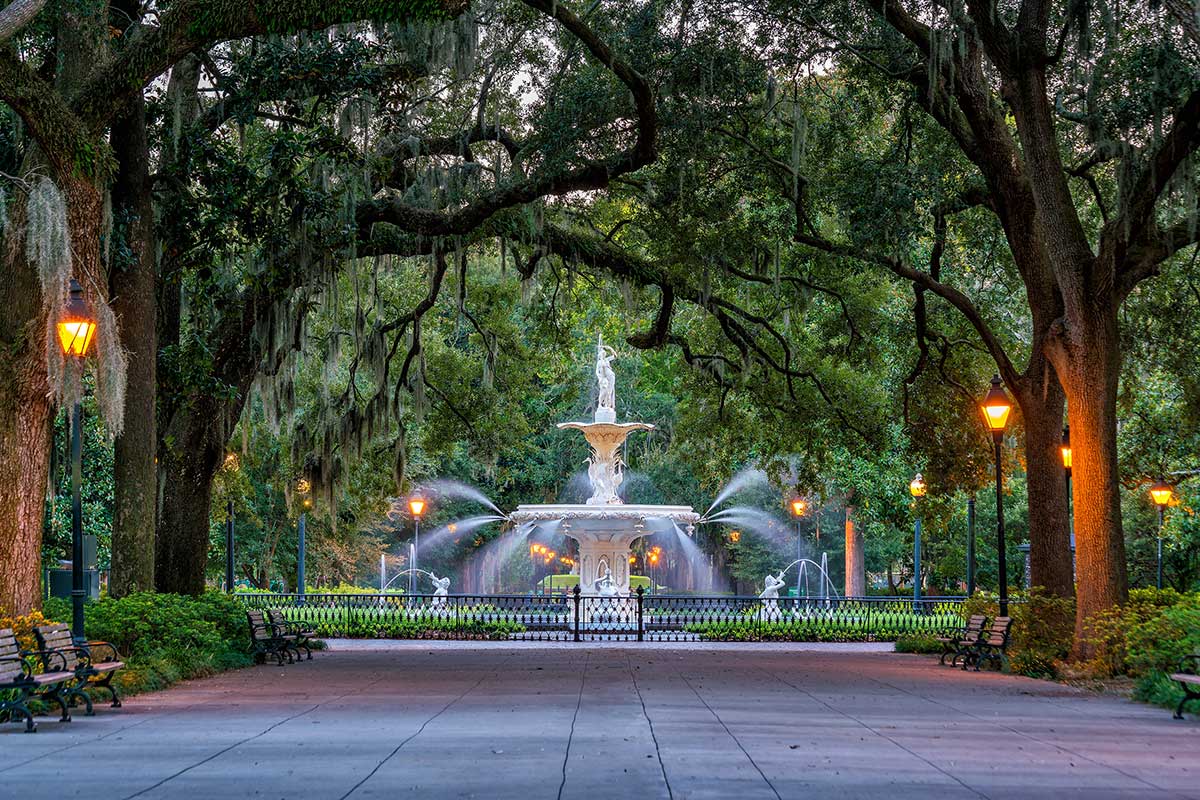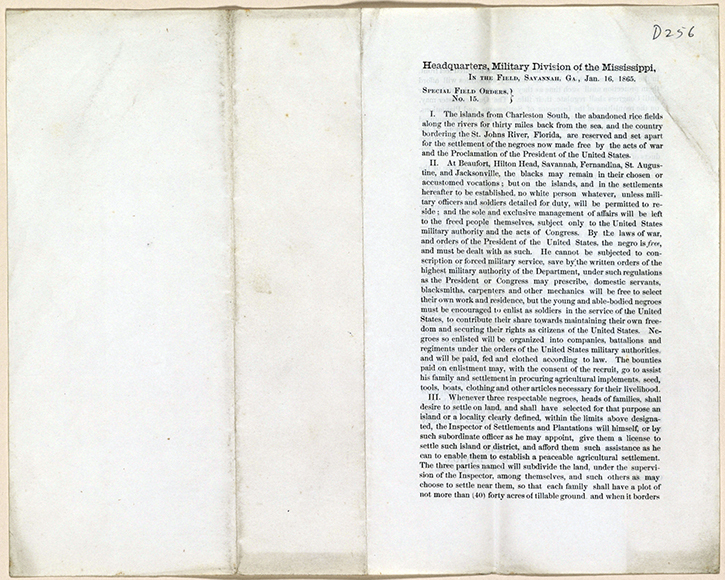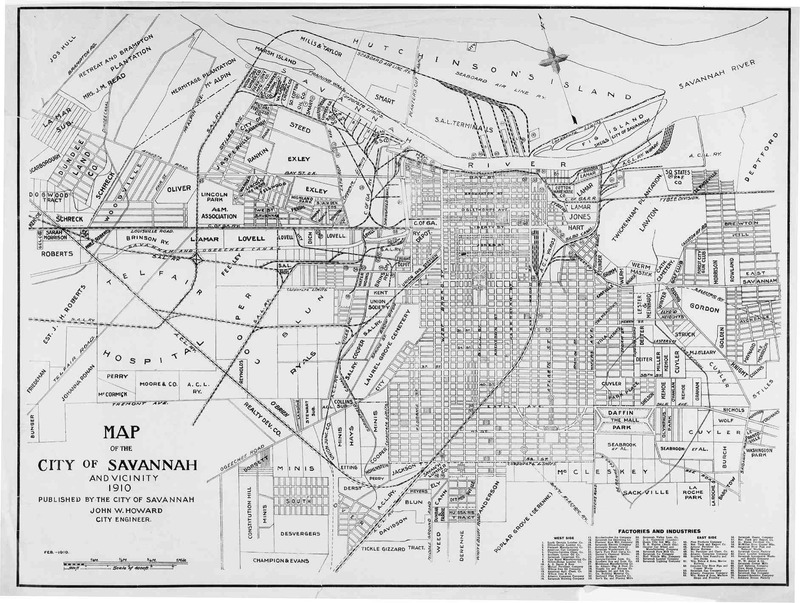Gallery for the Reconstruction Period
On January 16, 1865, Union general William T. Sherman issued his Special Field Order No. 15. The order redistributed 400,000 acres of land to freed black families. At the time of it’s release, the field order was given the nickname, 40 acres and a mule, which was considered adequate living conditions at the time. When writing the Field Order, Sherman addressed some black ministers in Savannah about where they wanted to live. They replied, blacks “would prefer to live by ourselves, for there is a prejudice against us in the South that will take years to get over.” (NPR – Sarah, McCammon). The field order may have been used as one of the first steps to give African American’s their freedom. Unfortunately for African American’s, the field order was pulled back by President Andrew Johnson in the fall of 1865 (New Georgia Encyclopedia). Even though the Field Order was short lived for African American's, it helped spark the creation of the Freedmen's Bureau. The Bureau was given responsibility of dividing up the land and handing it out equally. Many say Field Order Number 15 was the first genuine attempt at repaying African Americans for what they went through in the years beforehand. To this day, the argument stands that the United States Government never paid African American's for what had happened. This begs the question, what is the modern equivalent?
Myers, Barton. "Sherman's Field Order No. 15." New Georgia Encyclopedia. 08 June 2017. Web. 30 October 2018.
“Sherman's Field Order No. 15.” New Georgia Encyclopedia, www.georgiaencyclopedia.org/articles/history-archaeology/shermans-field-order-no-15.
Reparations. www.ptm.org/04PT/MayJun/reparationsReconcil.pdf.
The reconstruction of Savannah started very quickly after Sherman’s March to the Sea. There was a large rise in population due to the large numbers of freed slaves. After Sherman’s Special Field Order No. 15 was repealed by President Andrew Johnson, African Americans were subject to high rent and poor living conditions. Racial differences became very evident in Savannah at the time, two different cultures were forming in the small city. Life for African Americans was very difficult, check out this website to see what life looked like in 1865 Savannah -https://lynnwright00.wordpress.com/2012/01/30/picturing-19th-century-savannah-ga/. The difference between white culture was drastically different. Reconstruction was a time of hard questions and change in the United States. Savannah was able to be a source of many pressing questions in the late 19th century. The city was bustling with an economic boom of the established ports into the city, but at the same time struggling to cope with the fall of the confederacy in the south. Many blacks felt that their freedom that was promised never came to full fruition. As can be seen on the map, the city is small and condensed, so African Americans could be easily shielded off and put into their own section of the city.
Works Cited
“Picturing 19th Century Savannah, Ga.” Picturing Life, 30 Jan. 2012, lynnwright00.wordpress.com/2012/01/30/picturing-19th-century-savannah-ga/.
“Reconstruction.” Ushistory.org, Independence Hall Association, www.ushistory.org/us/35.asp.
“Savannah.” New Georgia Encyclopedia, www.georgiaencyclopedia.org/articles/counties-cities-neighborhoods/savannah.


